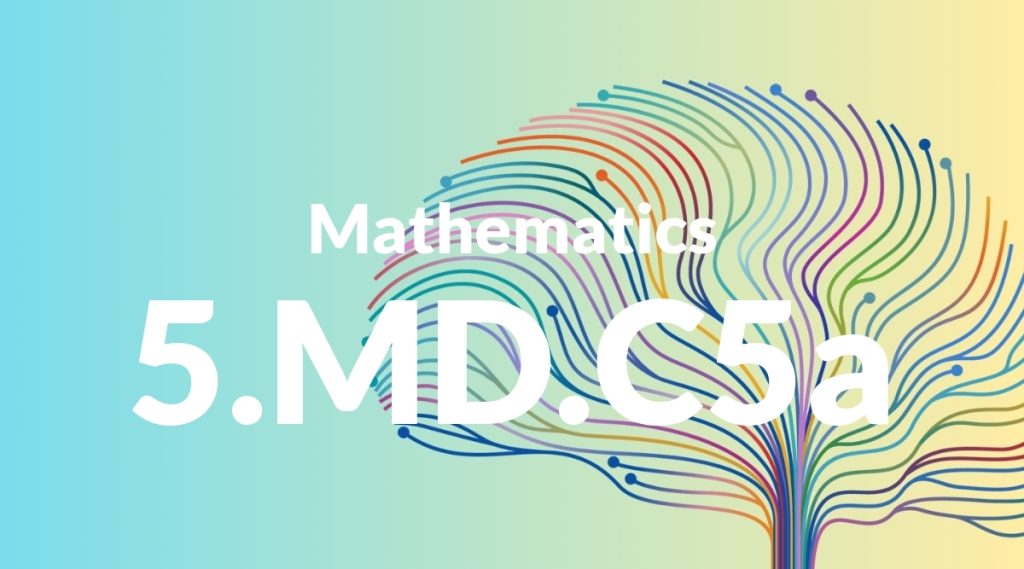Standard: 5.MD.C5a – Find the volume of a right rectangular prism with whole-number side lengths by packing it with unit cubes, and show that the volume is the same as would be found by multiplying the edge lengths, equivalently by multiplying the height by the area of the base. Represent threefold whole-number products as volumes, e.g., to represent the associative property of multiplication.
Grade level: Grade 5
Subject: Mathematics
Domain: Measurement & Data
Teacher Overview
This standard focuses on understanding and calculating the volume of right rectangular prisms using unit cubes and multiplication. It is crucial for students to grasp this concept as it builds a foundation for more advanced geometric and algebraic thinking. Students need a solid grasp of multiplication and area, as well as familiarity with three-dimensional shapes and unit cubes.
After mastering this standard, students will be able to tackle more complex volume problems and understand the properties of three-dimensional shapes, which are essential skills in higher-level math and real-world applications.
Common Misconception 1
Some students may incorrectly believe that volume is calculated by adding the edge lengths together. This misconception arises from a misunderstanding of the difference between linear, area, and volume measurements.
Intervention 1
To address this, use hands-on activities where students physically pack a rectangular prism with unit cubes. This visual and tactile experience can help them see that volume is a measure of three-dimensional space, not just length.
Common Misconception 2
Another common misunderstanding is confusing the area of the base with the volume of the prism. Students might think that finding the area of the base is the final step, not realizing that they need to multiply by the height to find the volume.
Intervention 2
Use diagrams and step-by-step examples to show the difference between area and volume. Practice problems that require students to calculate both can also help reinforce this distinction.
Prerequisite Knowledge
Students should understand basic multiplication and the concept of area. They should also be familiar with three-dimensional shapes and unit cubes.
Subsequent Knowledge
Students will develop skills in calculating volumes of more complex shapes and understanding the properties of three-dimensional figures. They will also learn to apply volume calculations in various real-world contexts.
Instructional Activities
- Hands-on activity with unit cubes to fill a rectangular prism
- Drawing and labeling diagrams of rectangular prisms
- Solving word problems involving the volume of rectangular prisms
- Using online simulations to visualize volume calculations




